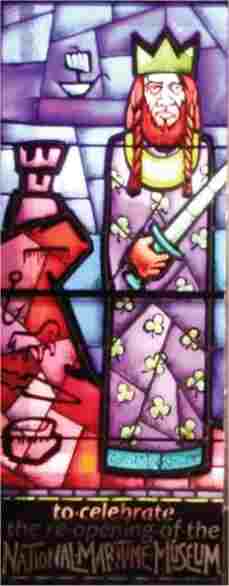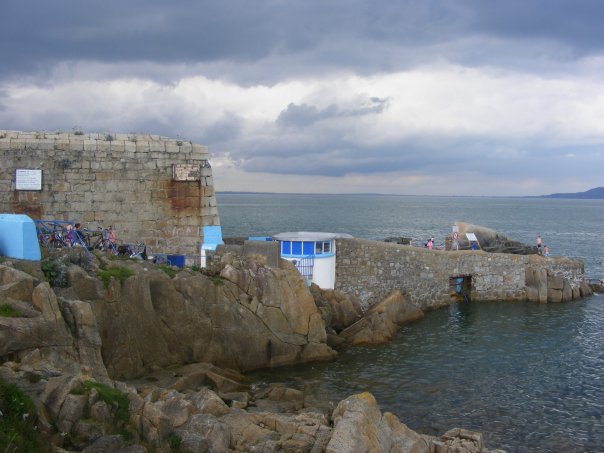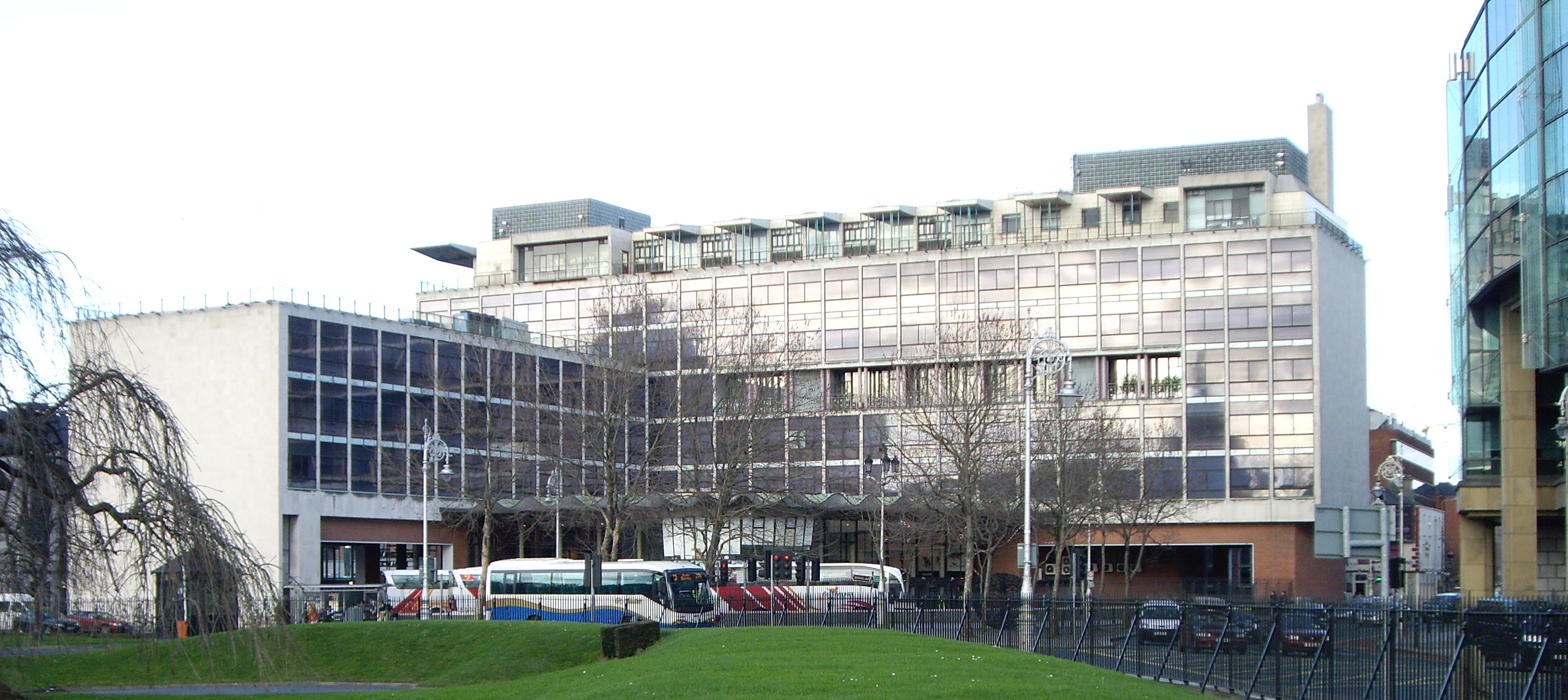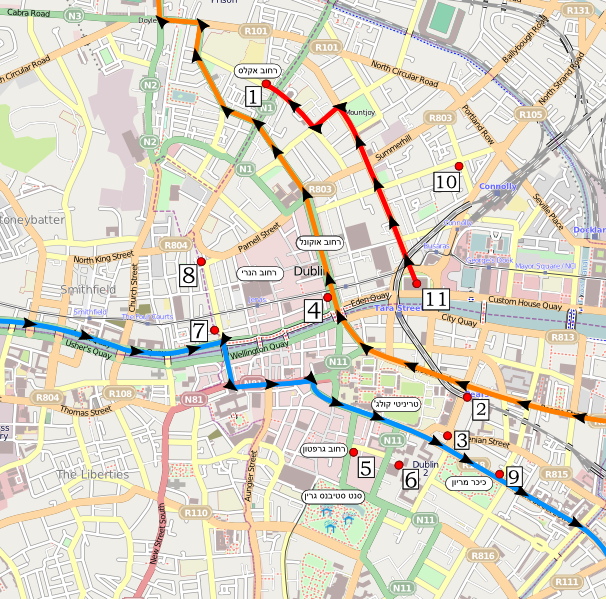|
Sandycove
Sandycove () is a suburb of Dublin, Ireland. It is southeast of Dún Laoghaire and Glasthule, and northwest of Dalkey. It is a popular seaside resort and is well known for its bathing place, the Forty Foot, which in the past was reserved for men only but is now available for mixed bathing. The locale features in the opening of ''Ulysses'' by James Joyce. History On 20 December 1940, during World War II, the Luftwaffe bombed the railway station even though Ireland was a neutral country. There were three injuries. Transport Sandycove and Glasthule railway station opened on 11 October 1855. Sandycove is also serviced by Dublin Bus numbers 59 and 111, and lies close to Dún Laoghaire harbour. Culture The writer James Joyce lived for a week as a young man in the Martello Tower situated beside the Forty Foot bathing place at Sandycove. The opening scene of Joyce's '' Ulysses'' is set in this tower. It now hosts a small Joycean museum, open all year round. Bloomsday is celebrat ... [...More Info...] [...Related Items...] OR: [Wikipedia] [Google] [Baidu] |
Sandycove And Glasthule Railway Station
Sandycove and Glasthule railway station ( ga, Stáisiún Chuas an Ghainimh agus Glas Tuathail) serves the suburban areas of Sandycove (on the coast) and Glasthule (just inland) in Dún Laoghaire–Rathdown, Ireland. The building is on a bridge as the rail line is in a cutting. Because of the station's altitude at sea level and the consequent moisture content of the earth, the track at, and surrounding, this station is laid on concrete rather than wooden sleepers. The ticket office is open between 05:45-00:15 AM, Monday to Sunday. History The station opened on 11 October 1855 as ''Kingstown & Sandycove'', renamed ''Sandycove'' in 1861 and ''Sandycove & Glasthule'' in 1967. The station was electrified in 1983 with the arrival of DART services. Transport services There are bus stops right outside the station on Sandycove Road served by the following: Dublin Bus Routes: * 7d - Mountjoy Square to Dalkey, via Dun Laoghaire * 7N Nitelink from Dublin city centre to Shankill ... [...More Info...] [...Related Items...] OR: [Wikipedia] [Google] [Baidu] |
Dún Laoghaire
Dún Laoghaire ( , ) is a suburban coastal town in Dublin in Ireland. It is the administrative centre of Dún Laoghaire–Rathdown. The town was built following the 1816 legislation that allowed the building of a major port to serve Dublin. It was known as Dunleary until it was renamed Kingstown in honour of King George IV's 1821 visit, and in 1920 was given its present name, the original Irish form of Dunleary. Over time, the town became a residential location, a seaside resort and the terminus of Ireland's first railway. Toponymy The town's name means "fort of Laoghaire". This refers to Lóegaire mac Néill (modern spelling: Laoghaire Mac Néill), a 5th century High King of Ireland, who chose the site as a sea base from which to carry out raids on Britain and Gaul. Traces of fortifications from that time have been found on the coast, and some of the stone is kept in the Maritime Museum. The name is officially spelt Dún Laoghaire in modern Irish orthography; somet ... [...More Info...] [...Related Items...] OR: [Wikipedia] [Google] [Baidu] |
Forty Foot
The Forty Foot () is a promontory on the southern tip of Dublin Bay at Sandycove, County Dublin, Ireland, from which people have been swimming in the Irish Sea all year round for some 250 years. * * Name The name "Forty Foot" is somewhat obscure. On an 1833 map, the Marine Road (located to the west) was named the Forty Foot Road, possibly because it was wide; the name may have been transferred to the swimming place, which was called the Forty-Foot Hole in the 19th century. Other accounts claim the name was given by fishermen because it was forty feet ( fathoms) deep, but the water in the area is no deeper than . Others have attempted to link it to the 40th (the 2nd Somersetshire) Regiment of Foot, who supposedly bathed there, but they were stationed at Richmond Barracks in Inchicore. Use At first, it was exclusively a male bathing place, and ''Sandycove Bathers Association'', a men's swimming club was established. Owing to its relative isolation and gender-restrictions ... [...More Info...] [...Related Items...] OR: [Wikipedia] [Google] [Baidu] |
Roger Casement
Roger David Casement ( ga, Ruairí Dáithí Mac Easmainn; 1 September 1864 – 3 August 1916), known as Sir Roger Casement, CMG, between 1911 and 1916, was a diplomat and Irish nationalist executed by the United Kingdom for treason during World War I. He worked for the British Foreign Office as a diplomat, becoming known as a humanitarian activist, and later as a poet and Easter Rising leader. Described as the "father of twentieth-century human rights investigations", he was honoured in 1905 for the Casement Report on the Congo and knighted in 1911 for his important investigations of human rights abuses in the rubber industry in Peru. In Africa as a young man, Casement first worked for commercial interests before joining the British Colonial Service. In 1891 he was appointed as a British consul, a profession he followed for more than 20 years. Influenced by the Boer War and his investigation into colonial atrocities against indigenous peoples, Casement grew to mistrust imperia ... [...More Info...] [...Related Items...] OR: [Wikipedia] [Google] [Baidu] |
Glasthule
Glasthule ( ; ) is a suburb of Dublin, Ireland. It is along County Dublin’s south coast, between Dún Laoghaire and Dalkey. Amenities Sandycove and Glasthule are served by a number of businesses and amenities, including retail outlets, public houses, a post office, restaurants, cafés and a playschool. The Presentation Brothers maintain a house in Glasthule and ran Presentation College Glasthule, a secondary school for boys, until 2006. The Harold National School, next door to Presentation Brothers still operates today. An Aircoach service links the area with Dublin Airport 24 hours a day. Popular culture Every year on 16 June it celebrates Bloomsday (the day on which James Joyce's novel Ulysses takes place). The James Joyce Tower The James Joyce Tower and Museum is a Martello tower in Sandycove, Dublin, where James Joyce spent six nights in 1904. The opening scenes of his 1922 novel '' Ulysses'' take place here, and the tower is a place of pilgrimage for Joyce ... [...More Info...] [...Related Items...] OR: [Wikipedia] [Google] [Baidu] |
Bernard Farrell
Bernard Farrell (born 1941) is an Irish dramatist, whose contemporary comedies – both light and dark – have been described as "well-wrought, cleverly shaped with a keen sense of absurdity" and as "dark and dangerous comedy in which characters are poised on the knife-edge between hilarious absurdity and hysterical breakdown". For the Abbey Theatre, he has served as a writer-In-association, as an advisory council member, and as a board director. He lives in Greystones, Co. Wicklow. Playwright Born in Sandycove, Co. Dublin. Both his parents were passionate about the theatre and his childhood was filled with attending plays. Following school at CBC Monkstown and further education at People's College Ballsbridge he worked for Sealink until 1980, when he resigned to write full-time for the theatre. Most of his 21-stage plays have been premiered at either the Abbey Theatre or the Gate Theatre in Dublin or at Red Kettle Theatre in Waterford. These include ''I Do Not Like Thee, Doc ... [...More Info...] [...Related Items...] OR: [Wikipedia] [Google] [Baidu] |
Dalkey
Dalkey ( ; ) is an affluent suburb of Dublin, and a seaside resort southeast of the city, and the town of Dún Laoghaire, in the county of Dún Laoghaire–Rathdown in the historic County Dublin, Ireland. It was founded as a Viking settlement and became an active port during the Middle Ages. According to chronicler John Clyn (c.1286–c.1349), it was one of the ports through which the plague entered Ireland in the mid-14th century. In modern times, Dalkey has become a seaside suburb that attracts some tourist visitors. One of Dublin's wealthiest districts, it has been home to writers and celebrities including George Bernard Shaw, Jane Emily Herbert, Maeve Binchy, Robert Fisk, Hugh Leonard, Bono, the Edge, Van Morrison and Enya. Etymology The district is named after Dalkey Island, just offshore. The name is ultimately derived from the Irish ''deilg'' ("thorn") and ''inis'' ("island"), with ''ey'' the Old Norse (Viking) version of "island". Geography Dalkey lies by th ... [...More Info...] [...Related Items...] OR: [Wikipedia] [Google] [Baidu] |
Martello Tower
Martello towers, sometimes known simply as Martellos, are small defensive forts that were built across the British Empire during the 19th century, from the time of the French Revolutionary Wars onwards. Most were coastal forts. They stand up to high (with two floors) and typically had a garrison of one officer and 15–25 men. Their round structure and thick walls of solid masonry made them resistant to cannon fire, while their height made them an ideal platform for a single heavy artillery piece, mounted on the flat roof and able to traverse, and hence fire, over a complete 360° circle. A few towers had moats or other batteries and works attached for extra defence. The Martello towers were used during the first half of the 19th century, but became obsolete with the introduction of powerful rifled artillery. Many have survived to the present day, often preserved as historic monuments. Origins Martello towers were inspired by a round fortress, part of a larger Genoese ... [...More Info...] [...Related Items...] OR: [Wikipedia] [Google] [Baidu] |
Michael Scott (architect)
Michael Scott (24 June 1905 – 24 January 1989) was an Irish architect whose buildings included the Busáras building in Dublin, Cork Opera House, the Abbey Theatre and both Tullamore and Portlaoise Hospitals. Early life and education He was born in Drogheda in 1905. His family originated in the Province of Munster. His father, William Scott, was a school inspector from near Sneem on the Iveragh Peninsula in County Kerry. His mother was from County Cork. Michael was educated at Belvedere College, Dublin. There he first demonstrated his skills at painting and acting. Initially, he wanted to pursue a career as a painter but his father pointed out that it might make more financial sense to become an architect. Career Scott became an apprentice for the sum of £375 per annum to the Dublin architectural firm Jones and Kelly. He remained there from 1923 until 1926, where he studied under Alfred E. Jones. In the evenings after work, he also attended the Metropolitan School o ... [...More Info...] [...Related Items...] OR: [Wikipedia] [Google] [Baidu] |
Peter Gatenby (doctor)
Peter Barry Brontë Gatenby (1923 – 24 August 2015 in Sandycove, County Dublin) was an Irish medical doctor, Medical Director for the United Nations and Professor of Medicine at Trinity College Dublin. He was Ireland’s first full-time professor of clinical medicine. Family Gatenby was the son of the zoologist James Brontë Gatenby and was related to the Brontë family. He had a wife, Yvette, two children, Robin and Odette, and six grandchildren. Career Gattenby earned a bachelors in medicine degree in Trinity College in 1946. Following graduation he worked in a number of hospitals in Ireland and the UK. From 1953 to 1974, he worked as a consultant physician at Dr Steevens' Hospital Dr Steevens' Hospital (also called Dr Steevens's Hospital) ( ga, Ospidéal an Dr Steevens), one of Ireland's most distinguished eighteenth-century medical establishments, was located at Kilmainham in Dublin Ireland. It was founded under the terms .... In 1960, he became the first full time pr ... [...More Info...] [...Related Items...] OR: [Wikipedia] [Google] [Baidu] |
Ulysses (novel)
''Ulysses'' is a modernist novel by Irish writer James Joyce. Parts of it were first serialized in the American journal '' The Little Review'' from March 1918 to December 1920, and the entire work was published in Paris by Sylvia Beach on 2 February 1922, Joyce's 40th birthday. It is considered one of the most important works of modernist literature and has been called "a demonstration and summation of the entire movement." According to Declan Kiberd, "Before Joyce, no writer of fiction had so foregrounded the process of thinking". ''Ulysses'' chronicles the appointments and encounters of the itinerant Leopold Bloom in Dublin in the course of an ordinary day, 16 June 1904. Ulysses is the Latinised name of Odysseus, the hero of Homer's epic poem the ''Odyssey'', and the novel establishes a series of parallels between the poem and the novel, with structural correspondences between the characters and experiences of Bloom and Odysseus, Molly Bloom and Penelope, and Stephen Ded ... [...More Info...] [...Related Items...] OR: [Wikipedia] [Google] [Baidu] |
Bloomsday
Bloomsday is a commemoration and celebration of the life of Irish writer James Joyce, observed annually in Dublin and elsewhere on 16 June, the day his 1922 novel '' Ulysses'' takes place in 1904, the date of his first sexual encounter with his wife-to-be, Nora Barnacle, and named after its protagonist Leopold Bloom. Name The English compound word ''Bloomsday'' is usually used in Irish as well, though some publications call it Lá Bloom. First celebration The first mention of such a celebration is to be found in a letter by Joyce to Miss Weaver of 27 June 1924, which refers to "a group of people who observe what they call Bloom's day – 16 June". On the 50th anniversary of the events in the novel, in 1954, John Ryan (artist, critic, publican and founder of ''Envoy'' magazine) and the novelist Brian O'Nolan organised what was to be a daylong pilgrimage along the ''Ulysses'' route. They were joined by Patrick Kavanagh, Anthony Cronin, Tom Joyce (a dentist who, as Joy ... [...More Info...] [...Related Items...] OR: [Wikipedia] [Google] [Baidu] |



.jpg)




